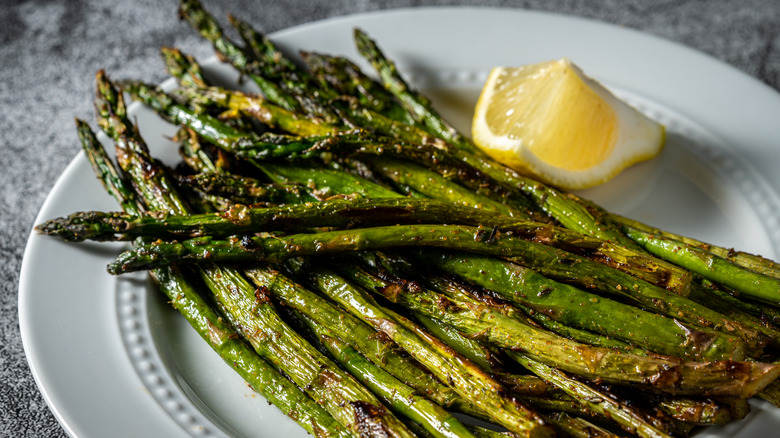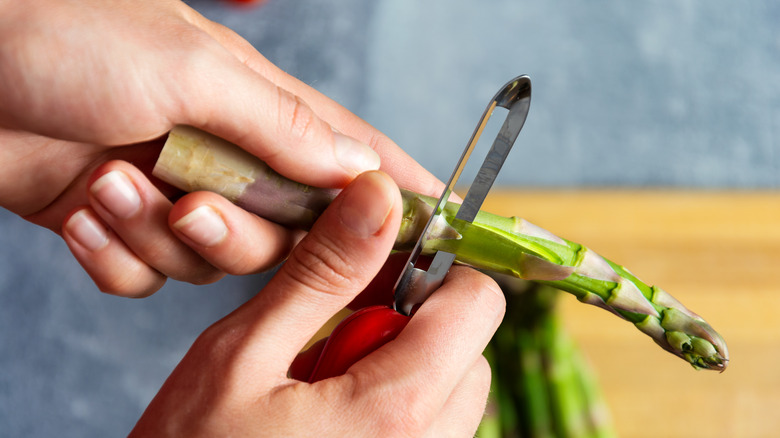Why You Should Start Peeling Asparagus Ends Instead Of Snapping
Asparagus is a delicious and nutritious vegetable that is enjoyed steamed, roasted, or grilled. However, when it comes to preparing asparagus, there is some debate over the best way to remove the tough, woody ends. Some people are fans of simply bending the asparagus until it snaps. Others choose to use a knife to cut off the woody ends and others peel them away. So what's best?
First, let's discuss snapping. Snapping off the ends of asparagus can cause more of the vegetable to be removed than necessary, resulting in wasted food. This is because snapping the asparagus causes it to split and break in unreliable places, taking more of the vegetable with it than is needed. This can especially happen with thicker asparagus spears which can lose even more volume than thinner ones when they are snapped instead of trimmed.
So there are some advantages to both chopping and peeling over snapping, but one technique remains a better option than the other.
This is the best way to trim asparagus
If snapping off the ends of asparagus is off-limits, most people will probably choose to trim them with a knife. While this ensures you save more of the asparagus than you might by snapping the spears, there is still a better way: peeling the asparagus. By peeling the ends of asparagus, you can remove just the tough, woody part while preserving as much of the vegetable as possible. This method results in less waste and ensures that you get the most out of your asparagus.
To peel the ends of asparagus, simply use a vegetable peeler to remove the tough outer layer. This will leave you with tender and delicious asparagus that is ready to be cooked and enjoyed. So, the next time you're preparing asparagus, be sure to give peeling a try and enjoy making the most of your asparagus spears. You won't regret minimizing the amount of waste.

